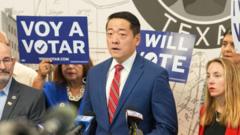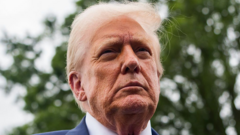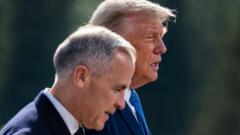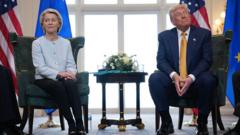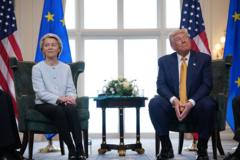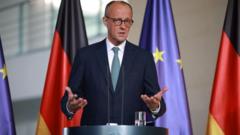As the backdrop of economic uncertainty persists, the Federal Reserve has decided to hold interest rates steady at 4.3%, maintaining its stance amid forecasts of slower growth and rising inflation despite external pressures.
Fed Maintains Steady Interest Rates Amid Economic Challenges
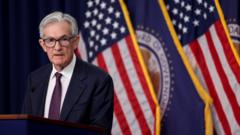
Fed Maintains Steady Interest Rates Amid Economic Challenges
Despite a tumultuous policy landscape, the Federal Reserve has opted to keep interest rates unchanged for the fourth consecutive time, signaling a cautious approach to economic shifts.
The Federal Reserve held firm on interest rates on Wednesday, opting for stability despite increasing concerns about the U.S. economy's direction. The decision marks the fourth consecutive time the bank has refrained from making changes to its key borrowing rate, which has remained at 4.3% since December.
This move defies a backdrop of evolving economic indicators, with Federal Reserve policymakers projecting slower growth, which is now expected to decline to 1.4% this year down from previous estimates of 1.7%. Additionally, forecasts have indicated that inflation is likely to rise to approximately 3%, with unemployment creeping up to 4.5%.
While President Donald Trump has actively advocated for rate cuts, citing a stabilizing economy, the Fed has maintained a focus on independent data-driven decision-making. Fed officials have expressed the need for more clarity on the potential economic impacts of tariffs and other policy shifts before cutting rates in response to price changes.
In the lead-up to the announcement, Trump reiterated his criticisms of Fed Chairman Jerome Powell, intensifying scrutiny of the Fed's actions. Market analysts, like Wealth Club's Isaac Stell, believe that despite the ongoing pressure for rate reductions, the Fed is inclined to uphold its independent approach and weigh decisions carefully.
The interest rate set by the Federal Reserve has significant ramifications on the broader economy, affecting borrowing costs for consumers and businesses alike. At 4.3%, the current rate is still considerably higher than the historically low rates between 2008 and 2022.
As the global context shifts, with other major banks like the European Central Bank and the Bank of England making cuts, the U.S. Federal Reserve appears to prioritize caution and thorough data assessment as it navigates its monetary policy strategy.
This move defies a backdrop of evolving economic indicators, with Federal Reserve policymakers projecting slower growth, which is now expected to decline to 1.4% this year down from previous estimates of 1.7%. Additionally, forecasts have indicated that inflation is likely to rise to approximately 3%, with unemployment creeping up to 4.5%.
While President Donald Trump has actively advocated for rate cuts, citing a stabilizing economy, the Fed has maintained a focus on independent data-driven decision-making. Fed officials have expressed the need for more clarity on the potential economic impacts of tariffs and other policy shifts before cutting rates in response to price changes.
In the lead-up to the announcement, Trump reiterated his criticisms of Fed Chairman Jerome Powell, intensifying scrutiny of the Fed's actions. Market analysts, like Wealth Club's Isaac Stell, believe that despite the ongoing pressure for rate reductions, the Fed is inclined to uphold its independent approach and weigh decisions carefully.
The interest rate set by the Federal Reserve has significant ramifications on the broader economy, affecting borrowing costs for consumers and businesses alike. At 4.3%, the current rate is still considerably higher than the historically low rates between 2008 and 2022.
As the global context shifts, with other major banks like the European Central Bank and the Bank of England making cuts, the U.S. Federal Reserve appears to prioritize caution and thorough data assessment as it navigates its monetary policy strategy.

